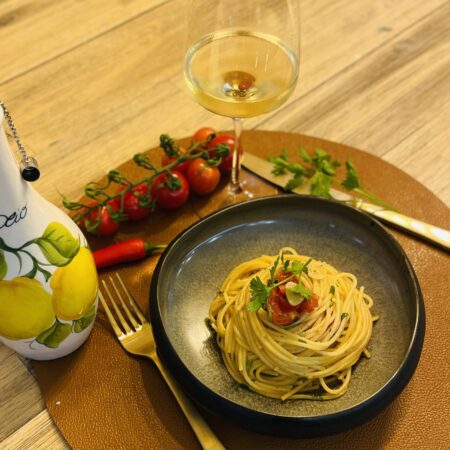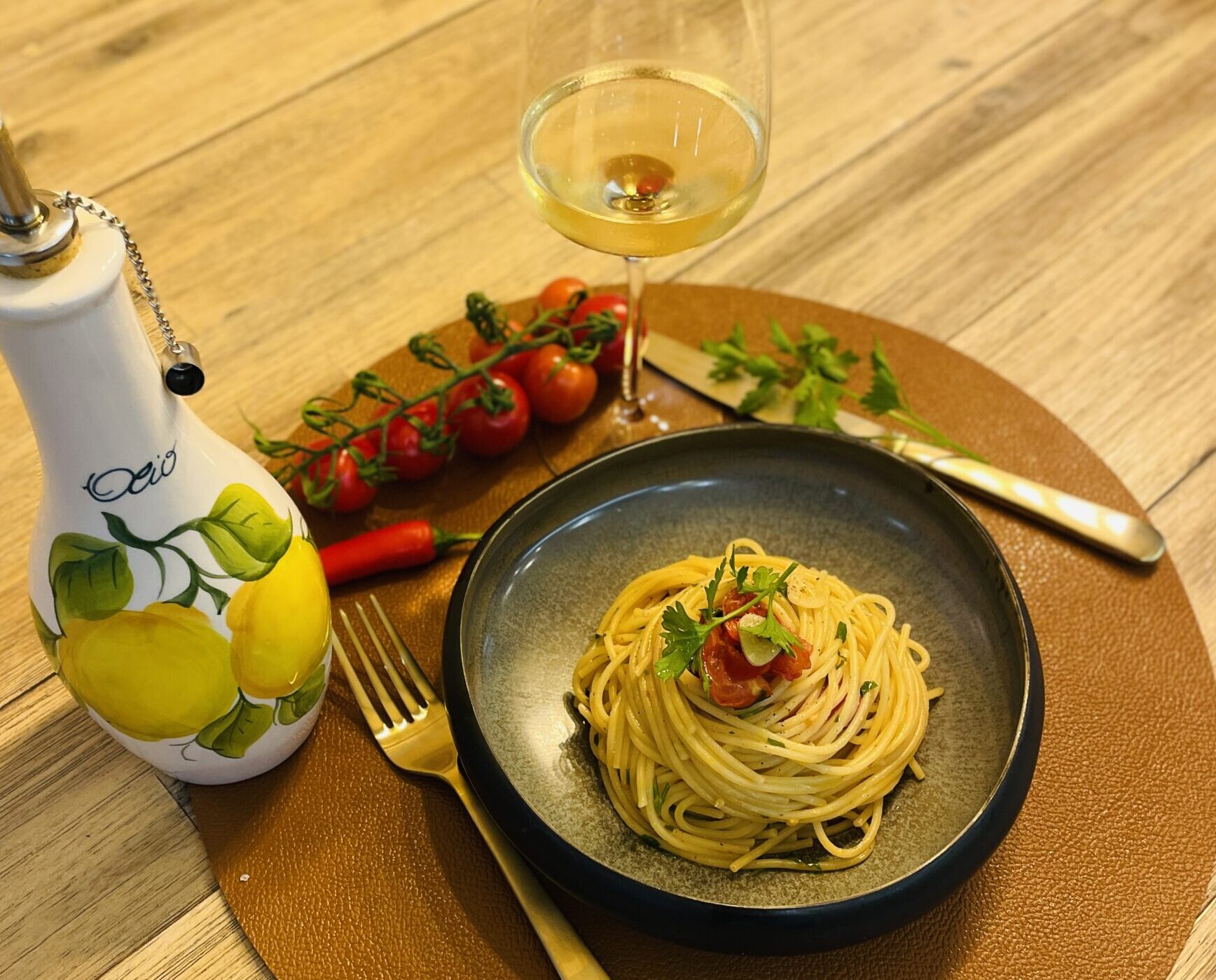Pasta aglio e olio: the art of one of the simplest perfections of Italian cuisine
Italian cuisine has conquered the world with its elegant simplicity, and one dish that perfectly embodies this philosophy is “Aglio e Olio,” or garlic and oil. This dish is like a musical masterpiece that consists of just a few notes but produces a symphony of flavors.

A mouth-watering origin
Aglio e Olio has its origins in the beautiful region of Abruzzo, located in the south of Italy. Abruzzo is known for its rich culinary traditions and ability to create something extraordinary from minimal ingredients. This dish was created as a culinary answer to the question: “How do you turn the everyday into something exceptional?”
On the table within 15 minutes
This pasta is not only incredibly tasty, but because it is so simple to make, this dish can be on the table in no time. This makes this pasta easy to prepare after a hard day of work, where there is little time for extensive dishes, or for a tasty quick lunch, for example! Within 15 minutes you can enjoy a delicious pasta that is both satisfying and tastes like it came straight from an Italian restaurant. It has become a favorite for many because of its perfect balance of taste and convenience.

Which type of pasta for agio e olio?
You can use different types of pasta for pasta aglio e olio, but spaghetti is traditionally the most common choice. The thin, long strings of spaghetti absorb the flavor of the garlic and olive oil well and provide a great texture. Other pasta varieties to consider for aglio e olio include linguine (flat, wide strings), fettuccine (wide, ribbon-like pasta), or bucatini (hollow spaghetti). The most important thing is that you choose pasta that you like and that goes well with the sauce. It is also important to cook the pasta “al dente”, which means that the pasta is still slightly firm when you bite into it. This provides a better texture and taste in combination with the garlic oil.
Basically, you can experiment with different pasta varieties, but spaghetti is the classic choice for pasta aglio e olio.
If you have any doubts about the differences between fresh or dried pasta? Then take a look at this article.

The ingredients of Pasta aglio e olio:
Pasta
As we have just described above, the choice of pasta is essential for the dish.
Garlic
Garlic is the star of the dish. It is thinly sliced and slowly fried in olive oil, which produces a deep, nutty flavor and irresistible aroma.
Olive oil
High-quality olive oil forms the basis of the sauce. It serves as the canvas on which the garlic and red pepper flavors are painted, adding richness and smoothness to the paste. We use extra virgin olive oil. This provides a strong taste in your pasta.
Fresh red pepper
For those who like a little spice, red pepper can be added for a mild spiciness. This ingredient can of course be adjusted to personal taste. Those who tolerate spicy food can always add a little more.
Fresh flat-leaf parsley
Fresh parsley, finely chopped and added as a garnish, adds a fresh and lively flavor to the dish and provides a nice contrast to the rich flavor of the garlic, red pepper and olive oil.
Cherry tomato
The cherry tomato initially ensures that your garlic does not burn just after you have added it to the olive oil. In addition, the tomatoes also provide a nice fresh taste to your dish.

Pasta aglio e olio
Equipment
- Chef's knife
- Frying pan
- Pan for cooking the pasta
- Colander
Ingredients
- 200 gram dry spaghetti
- 4 cloves garlic cut into fine slices
- 1 fresh red pepper cut into fine slices
- 3 twigs fresh flat-leaf parsley finely chopped
- 100 gram cherry tomatoes halved
- 40 milliliter good extra virgin olive oil
- pepper and salt
- Parmesan cheese grated optional
Instructions
- Cut all ingredients as described above.
- Cook the pasta in (well) salted water according to the instructions on the package until al dente. Drain, but reserve some of the cooking water.
- While the pasta is cooking, heat olive oil in a large frying pan over low heat. Add the chopped garlic and red pepper.
- Slowly fry the garlic until golden brown and aromatic. Be careful not to burn the garlic as this can give it a bitter taste. If you notice that it's going too fast, add the cherry tomatoes!
- Add the cherry tomatoes and parsley to the mixture, together with a few spoonfuls of the cooking liquid. This will ensure that your pasta sauce will emulsify.
- Add the cooked pasta to the pan with garlic oil and mix well. If necessary, add a little of the reserved cooking water.
- Season the pasta with salt and black pepper
- Serve the pasta immediately, possibly with a drizzle of extra olive oil, extra sea salt and grated Parmesan cheese.



